IoT in Water Management: Benefits & Solutions for 2025 and Beyond
Written by:

Kostiantyn Oliynyk
Head of IoT at Webbylab
With a robust academic background in Telecommunication Systems Engineering, I apply my knowledge to lead innovations in the IoT domain. Starting as the first team member in the newly formed IoT department at WebbyLab, I've spearheaded its growth, fostering the expansion into embedded and hardware development alongside our core software projects. My dedication lies in pushing the boundaries of IoT technology, fostering a culture of innovation and excellence that profoundly impacts our clients' operational success.
IoT water quality monitoring system development varies in cost depending on the system’s complexity, the number of devices, IoT programming languages, and the integration of advanced technologies like artificial intelligence for water flow management. Basic water conservation using IoT system might start at around $20,000 to $50,000.
The time it takes to develop an IoT network for water treatment devices depends on the overall project complexity. The simplest solutions might require several months to get built.
WebbyLab collaborates with various businesses, including those in the smart cities market, environmental management, and industries focused on water distribution system using IoT. The size of the companies varies from startups to enterprises.
IoT devices for water management and sensors help collect real-time data on the water supply system. The insights gathered can then be applied for more efficient use of resources and process automation.
It leverages advanced IoT sensors attached to the equipment. Thus, IoT-powered systems allow for the fast transmission of data, helping businesses mitigate risks associated with water pollution and generally make more effective decisions on water management.
An IoT intelligent water management system for irrigation typically leverages soil moisture, rain, water flow, and weather sensors.
Such a system helps determine and adjust water levels remotely and detect leakages. It’s beneficial since it requires less manual labor, saves costs, and sends notifications if some parameters are not within the normal range.


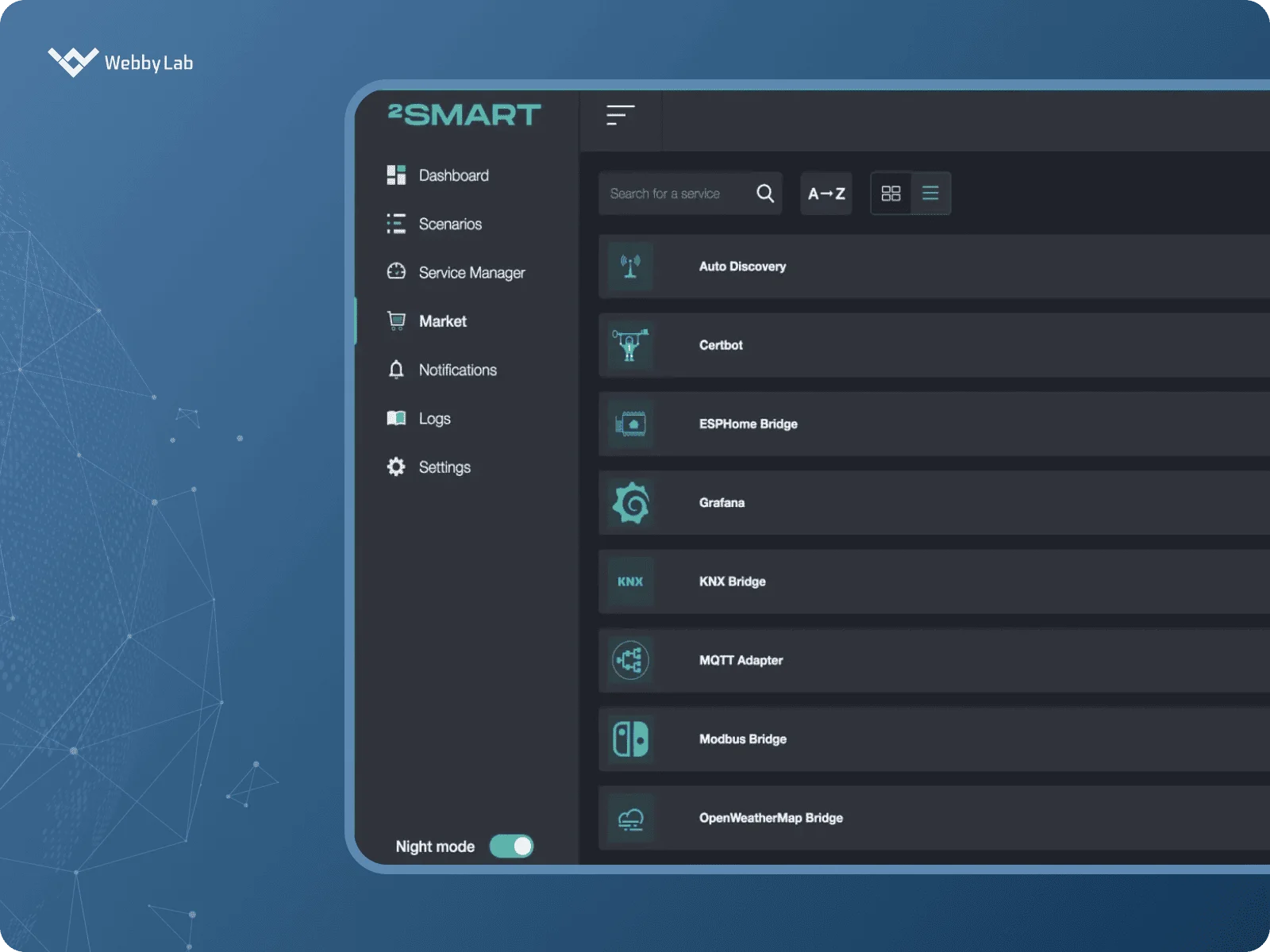 The user interface of the 2Smart Standalone automation platform
The user interface of the 2Smart Standalone automation platform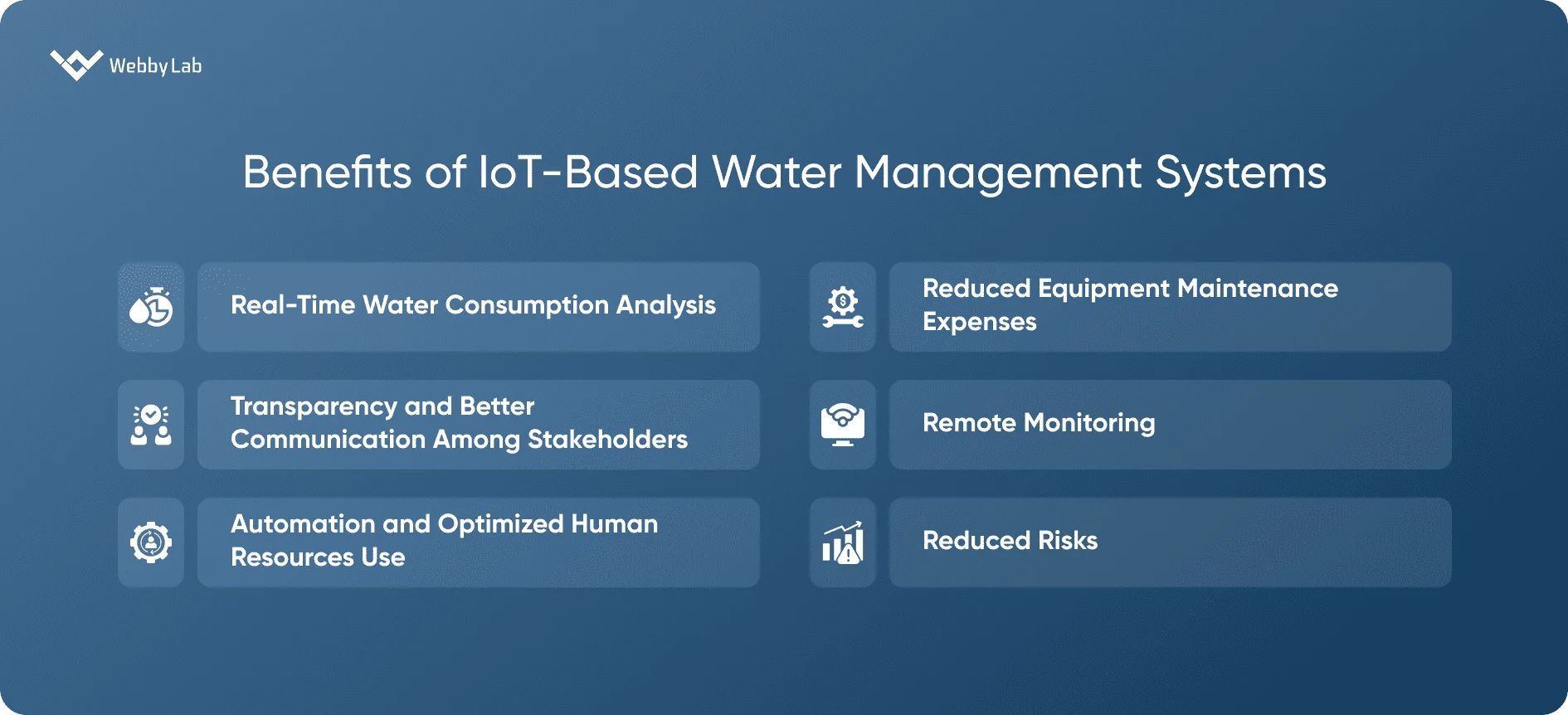
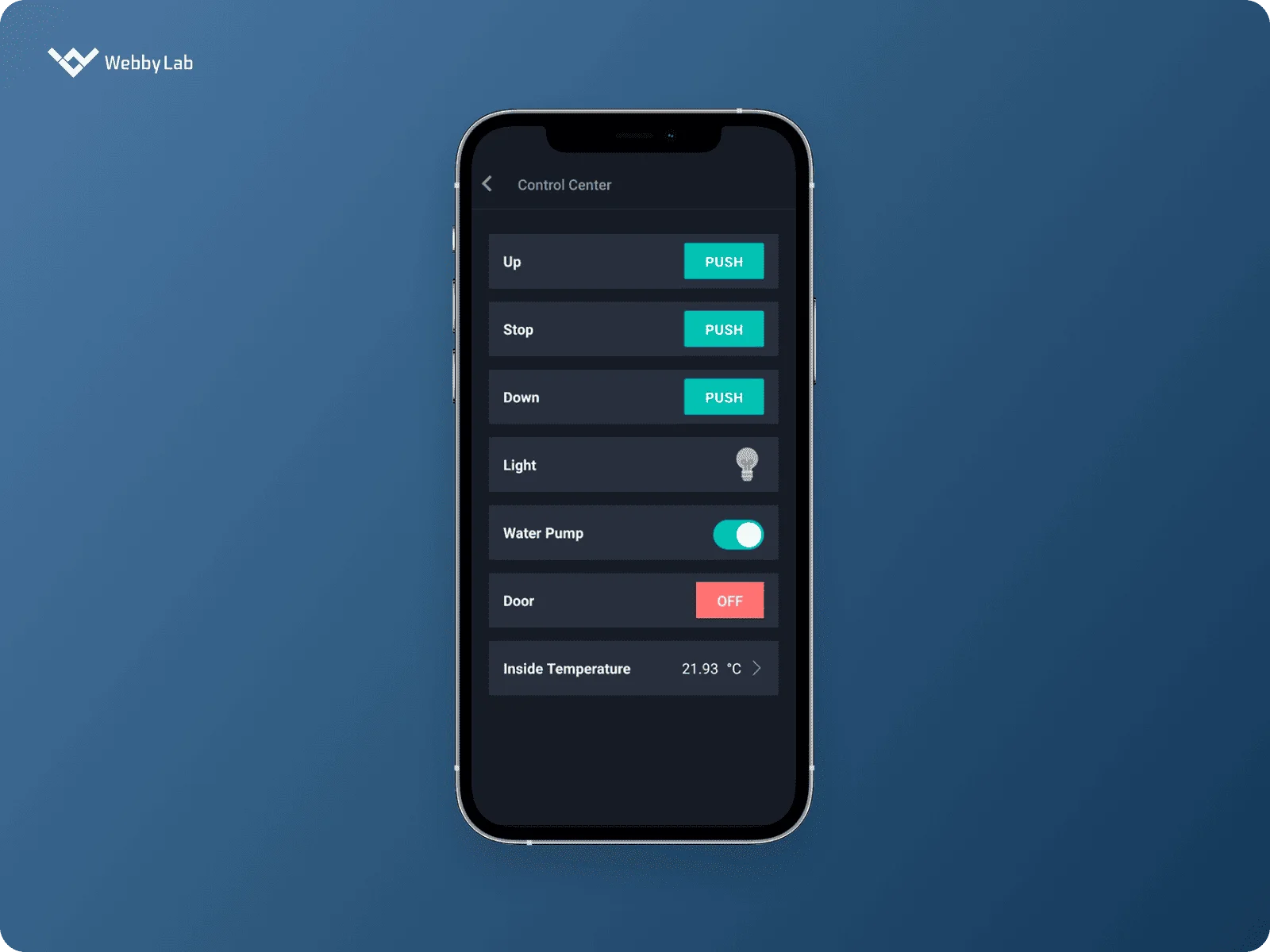 Managing the greenhouse parameters via a mobile app
Managing the greenhouse parameters via a mobile app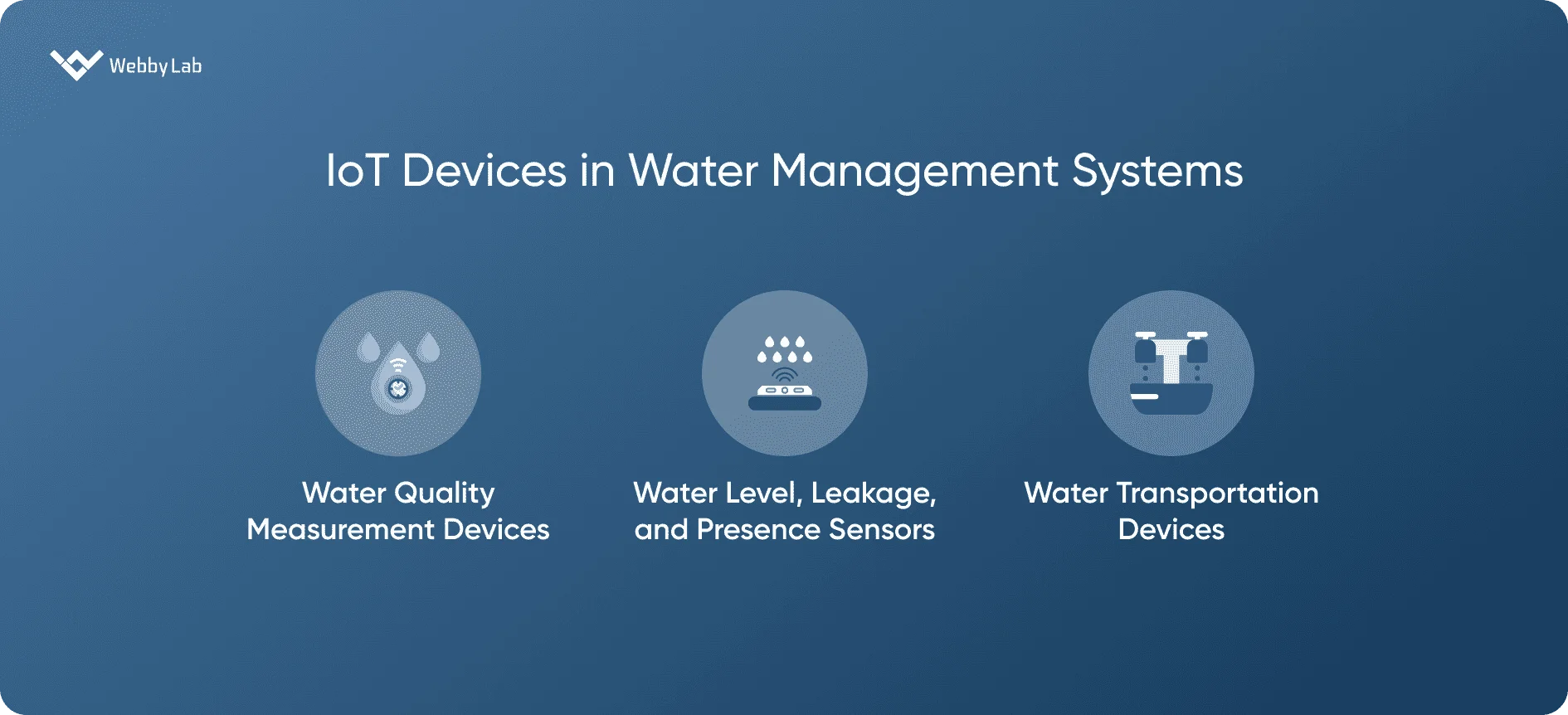
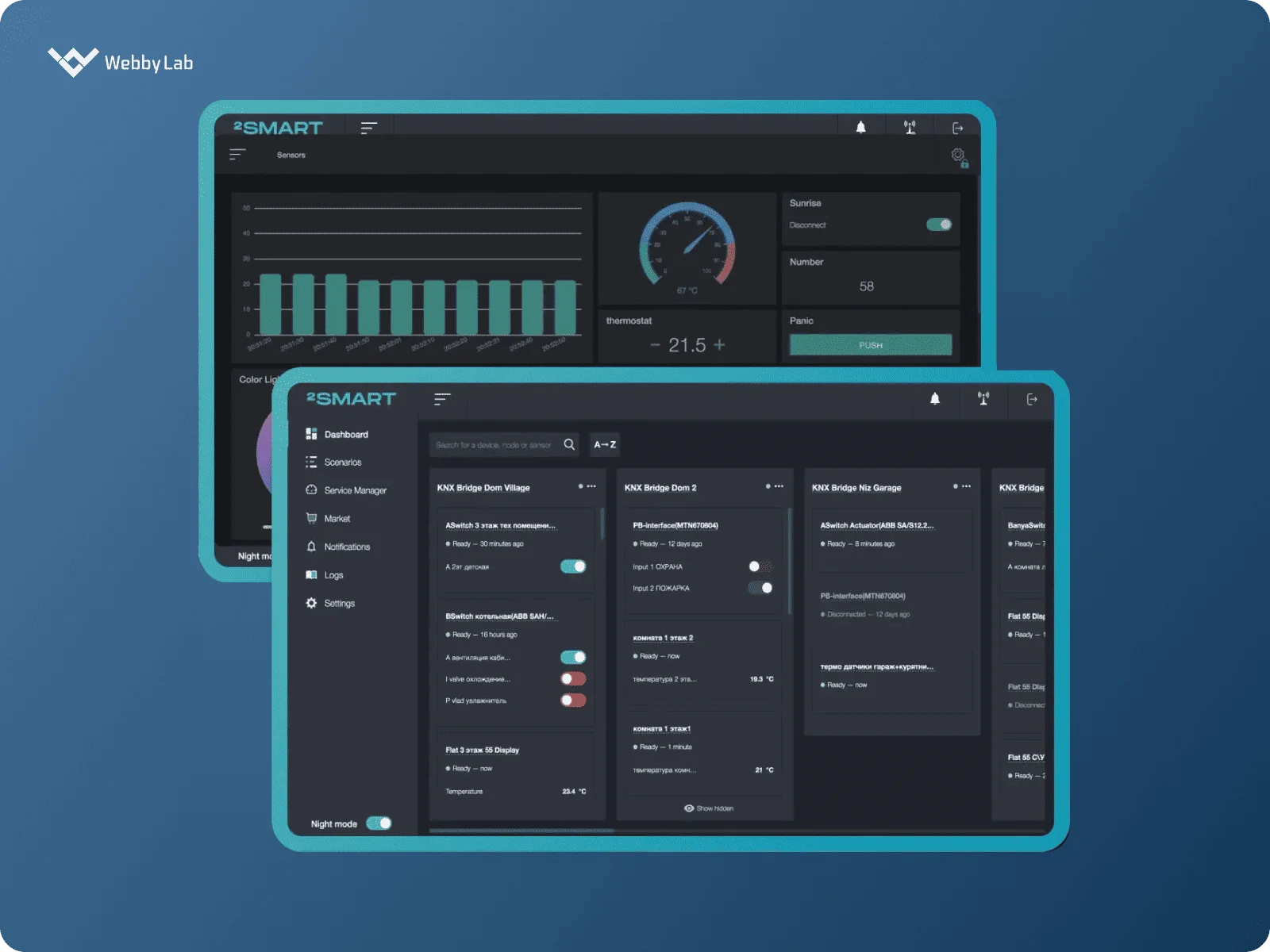 Connecting various IoT devices and sensors to the 2Smart Standalone platform
Connecting various IoT devices and sensors to the 2Smart Standalone platform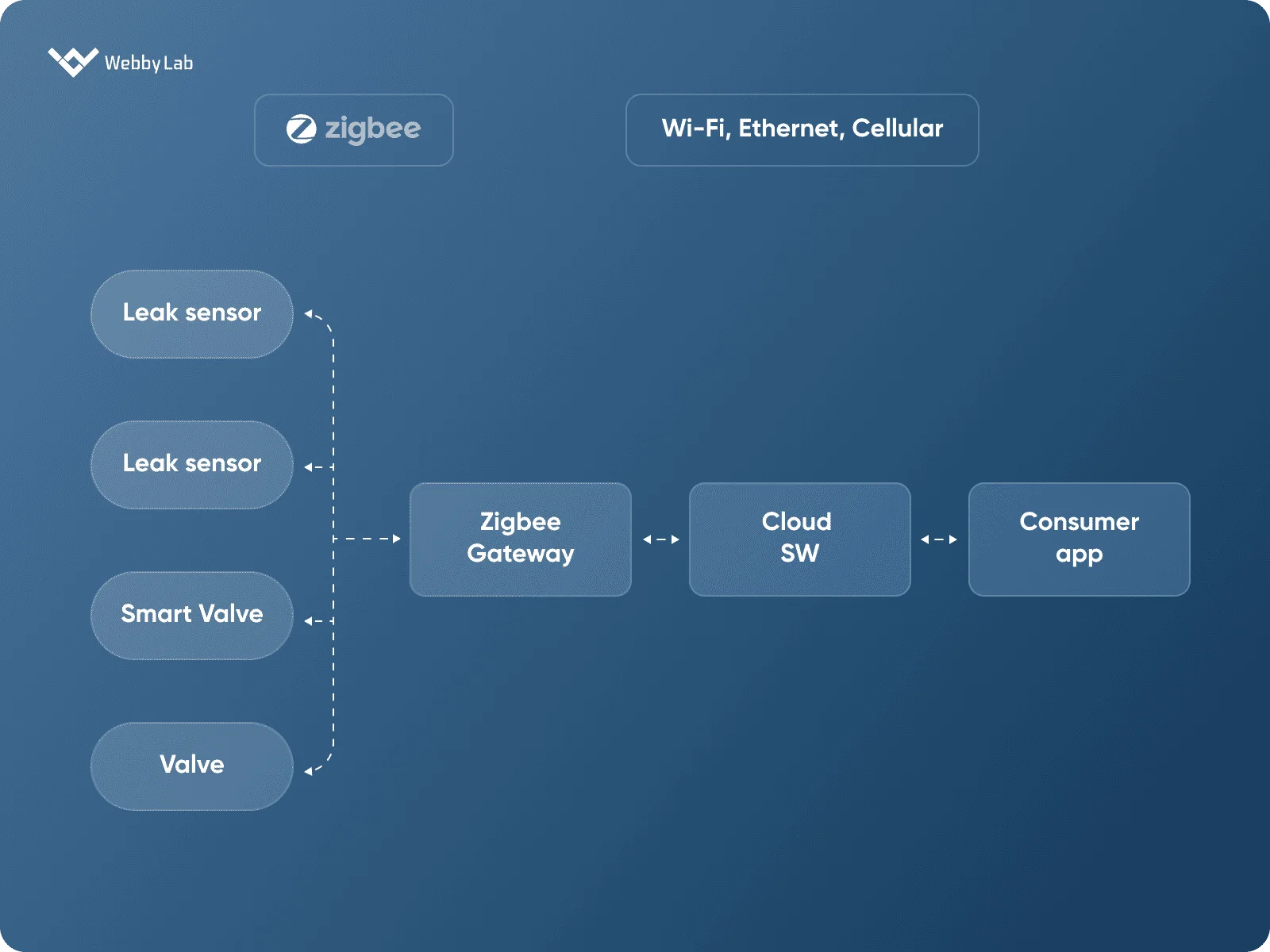 The architecture of a leak detection system
The architecture of a leak detection system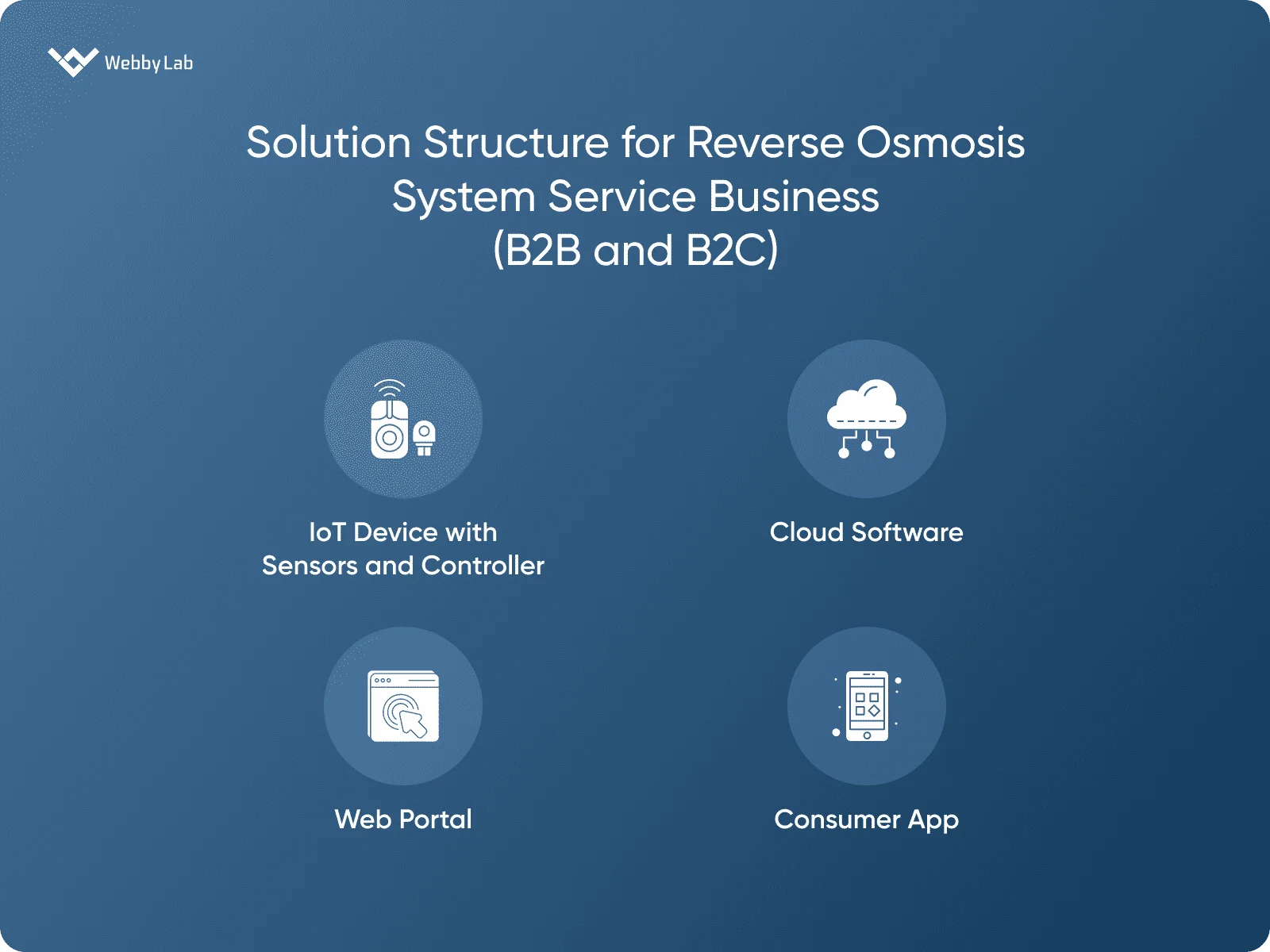
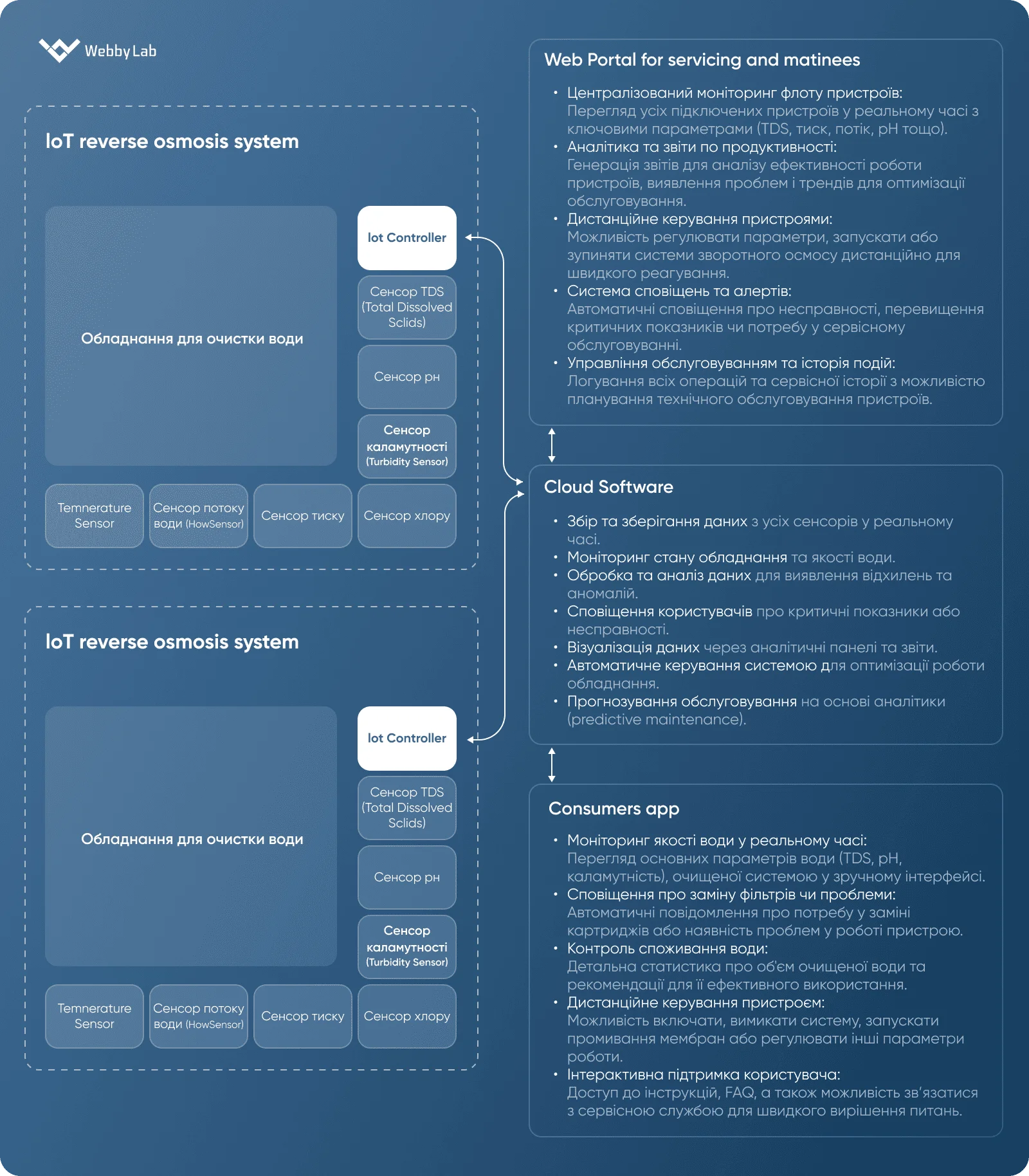 The architecture of a reverse osmosis system
The architecture of a reverse osmosis system



